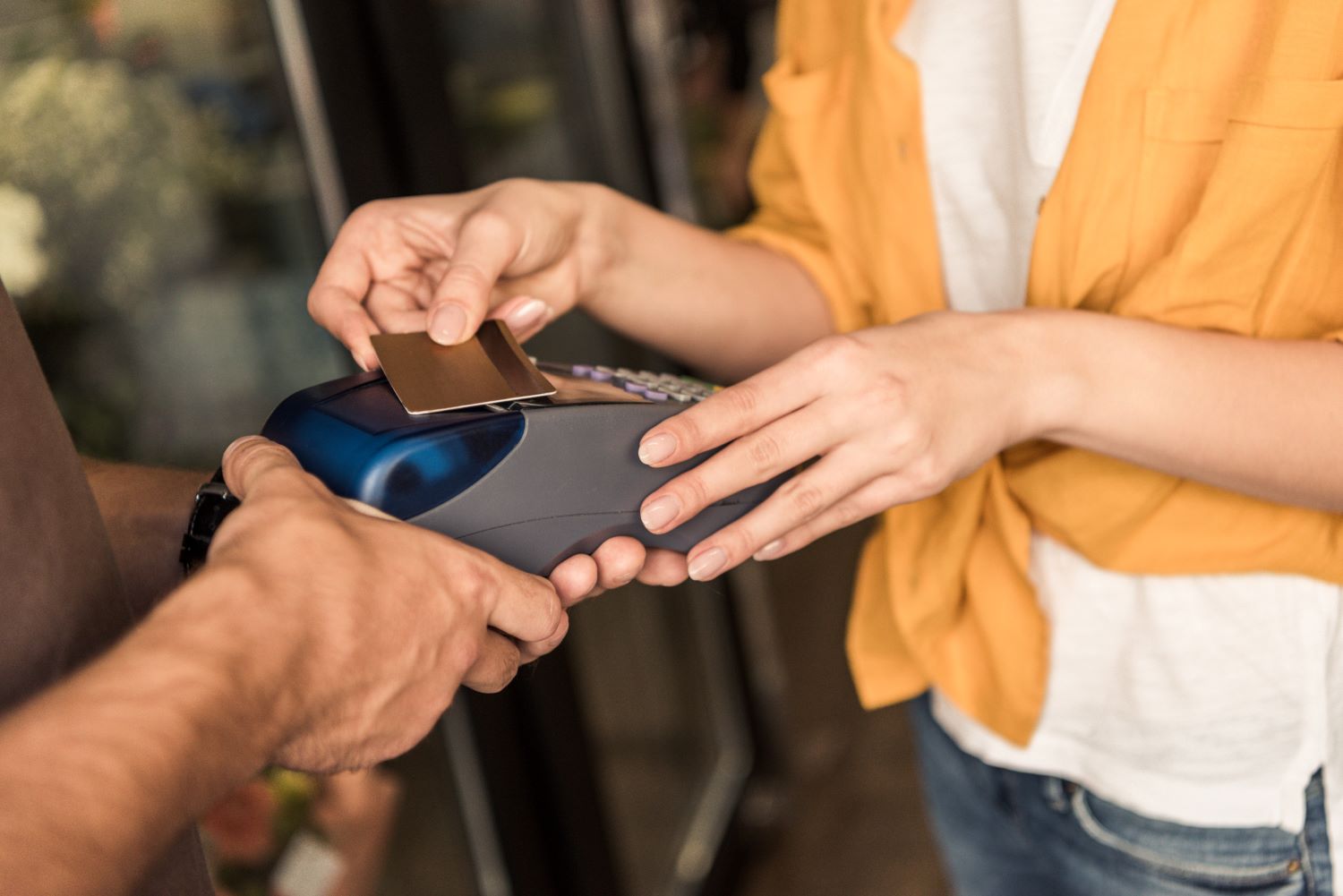What is payment authorisation, and how does it work?
At the core of every electronic payment transaction is the critical step of payment authorisation. Whether you’re running an e-commerce store, a brick-and-mortar shop, or providing a service that requires online payments, understanding how payment authorisation works is essential for the smooth operation of your business. This blog post will explore the ins and outs of payment authorisation, the key players involved, the benefits and challenges, and how you can optimise this process to ensure seamless customer transactions.
Who are the key players involved in payment authorisation?
Payment authorisation is not a solitary process; it involves multiple entities working together to ensure that transactions are secure and legitimate.
Merchants
Merchants are businesses or individuals selling goods or services. They initiate the payment authorisation process when a customer makes a purchase.
Customers
Customers are the buyers who provide their payment details to complete a transaction. They are the originators of the payment authorisation request.
Payment gateways
Payment gateways act as the bridge between the merchant and the financial institutions involved. They securely transmit payment data and ensure the transaction process is smooth and efficient.
Acquiring banks (acquirers)
The acquiring bank is the merchant’s bank. It receives the payment request from the payment gateway and forwards it to the issuing bank.
Issuing banks (issuers)
The issuing bank is the customer’s bank. Before authorising the payment, it verifies the payment details, checks for sufficient funds, and ensures the transaction is not fraudulent.
How does the payment authorisation process work?
It involves a series of steps that ensure the necessary parties approve a transaction before it is completed. Here’s a breakdown of how it works:
The process begins when a customer initiates a purchase. This could be through swiping their card at a point-of-sale terminal or entering their payment details online. The payment gateway captures these details and prepares them for authorisation.
The payment gateway is the intermediary that securely transmits the payment information from the customer to the acquiring bank (the merchant’s bank). It ensures the data is encrypted, safeguarding sensitive information from potential breaches.
Once the acquiring bank receives the payment request, it forwards it to the card issuer (the bank that issued the customer’s card). The issuer checks the validity of the card details, ensures that the account has sufficient funds, and verifies that the transaction is not flagged as fraudulent.
If everything checks out, the issuer approves the transaction, and the acquiring bank sends this approval back through the payment gateway to the merchant. The funds are held or ‘reserved’ in the customer’s account until the transaction is completed or captured. If the transaction is flagged for any reason, such as insufficient funds or suspicious activity, it is rejected, and the customer is notified.
What are the types of payment authorisation?
Payment authorisation can take different forms depending on the nature of the transaction and the business’s requirements. Understanding these types can help companies to choose the best method for their needs.
Pre-authorization
Pre-authorization is a common practice in industries like hospitality and car rentals. In this type, the issuer reserves the funds in the customer’s account, but the transaction is not completed later. This ensures the customer has sufficient funds when the final payment is due.
Full authorisation
In full authorisation, the transaction is completed in one go. The issuer approves the payment, and the funds are immediately deducted from the customer’s account. This is typical for most retail purchases, whether online or in-store.
Partial authorisation
Partial authorisation occurs when the customer’s account has insufficient funds to cover the total transaction amount. The issuer authorises a portion of the payment, and the merchant may request an alternative payment method for the remaining balance.
What are the benefits of payment authorisation for businesses?
Payment authorisation offers numerous business advantages, from enhanced security to improved customer satisfaction. Let’s explore some of these benefits:
Improved security
One of the primary benefits of payment authorisation is the security it provides. By verifying the payment details and ensuring that the transaction is legitimate, businesses can significantly reduce the risk of fraud. This not only protects the merchant but also builds trust with customers.
Reduction of chargebacks
Chargebacks occur when a customer disputes a transaction, and the funds are returned to their account. This can be costly for businesses. Payment authorisation helps prevent chargebacks by ensuring that transactions are legitimate and that customers have the necessary funds.
Enhanced customer satisfaction
When a payment is authorised quickly and efficiently, customers experience a seamless transaction. This enhances their shopping experience and encourages repeat business, which can be a significant factor in customer retention.
Better cash flow management
With payment authorisation, businesses can better manage their cash flow. Companies can avoid cash flow disruptions and ensure a steady income stream by ensuring funds are available and reserved before goods or services are delivered.
What challenges are associated with payment authorisation?
Despite its benefits, payment authorisation can present some challenges for businesses. Understanding these challenges can help you prepare and mitigate potential issues.
Authorisation failures
Authorisation failures can occur for various reasons, such as insufficient funds, expired cards, or flagged transactions. These failures can lead to lost sales and frustrated customers, so businesses need to have strategies in place to handle these situations effectively.
Delayed authorisations
Sometimes, authorisations can be delayed due to technical issues or slow responses from the issuer. This can impact the customer experience, particularly when instant approval is expected.
Fraud risks
While payment authorisation helps reduce fraud, it is not foolproof. Sophisticated fraudsters can sometimes find ways to bypass authorisation checks, leading to potential losses for businesses. Implementing additional security measures can help mitigate these risks.
How can businesses optimise their payment authorisation process?
Optimising the payment authorisation process can lead to higher approval rates, reduced fraud, and a better customer experience. Here are some best practices for improving your payment authorisation process:
Utilise advanced payment gateways
Choosing a reliable and advanced payment gateway can significantly improve the efficiency of your payment authorisation process. Look for gateways that offer features such as real-time fraud detection, automated retry mechanisms, and integration with multiple payment methods.
Implement strong security measures.
Security is paramount in payment authorisation. Ensure that your payment processes comply with industry standards, such as PCI DSS, and consider implementing additional security protocols like tokenisation and encryption. Regularly updating your systems and staying informed about the latest security threats can also help protect your business.
Streamline the customer experience.
A complicated or slow payment process can lead to abandoned transactions. Streamline the payment experience by minimising the steps required to complete a purchase and ensuring your payment forms are user-friendly. Multiple payment options can also cater to customer preferences, increasing the likelihood of successful authorisations.
Monitor and analyse authorisation data.
Regularly monitoring your payment authorisation data can provide valuable insights into your transaction processes. Look for patterns in authorisation failures and use this information to adjust your payment strategies. Analysing this data can help you identify and proactively address potential fraud risks.
What are the security considerations in payment authorisation?
Security is a critical aspect of payment authorisation, as it involves handling sensitive customer data and financial information. Here are some key security considerations:
PCI DSS compliance
The Payment Card Industry Data Security Standard (PCI DSS) is a set of security standards designed to protect cardholder data. Compliance with PCI DSS is mandatory for businesses that process, store, or transmit credit card information. Ensure that your payment processes adhere to these standards to protect your business and customers.
Tokenisation and encryption
Tokenisation and encryption are two techniques used to secure payment data. Tokenisation replaces sensitive data with a unique identifier or token, which can be used to process payments without exposing the original information. Encryption converts data into a secure code that can only be deciphered with a key. Implementing these technologies can significantly reduce the risk of data breaches.
Fraud detection and prevention
Advanced fraud detection tools can help identify and prevent fraudulent transactions before they are authorised. Machine learning algorithms can analyse transaction patterns and flag suspicious activities in real time. Consider integrating these tools into your payment processes to enhance security.
What future trends should businesses expect in payment authorisation?
The landscape of payment authorisation is continually evolving, with new technologies and trends shaping how businesses process payments. Here are some future trends to watch out for:
Artificial intelligence and machine learning
AI and machine learning are playing an increasingly significant role in payment authorisation. These technologies can analyse vast transaction data to identify patterns and predict potential fraud. As AI advances, we can expect more sophisticated fraud detection and prevention methods to emerge.
Biometric authentication
Biometric authentication is becoming more prevalent in the payment authorisation process. This technology uses unique physical characteristics, such as fingerprints, facial recognition, or iris scans, to verify the user’s identity. As businesses and consumers demand higher levels of security, biometric authentication is likely to become a standard feature in payment authorisation systems.
Blockchain technology
Blockchain technology is another trend that could significantly impact payment authorisation in the future. By providing a decentralised and transparent ledger for transactions, blockchain can enhance the security and efficiency of payment processes. While still in its early stages, blockchain-based payment systems could reduce the need for intermediaries in the authorisation process, leading to faster and more secure transactions.
Seamless cross-border payments
As businesses increasingly operate globally, the need for seamless cross-border payments is growing. Payment authorisation processes must adapt to handle multiple currencies, diverse regulatory environments, and varying payment preferences across different regions. Innovations in cross-border payment technologies will likely simplify and streamline international transactions, making it easier for businesses to operate globally.
Customer-centric payment solutions
The demand for more customer-centric payment solutions will also shape the future of payment authorisation. Consumers are looking for payment experiences that are not only secure but also convenient and personalised. Payment systems that offer flexible authorisation options, such as recurring payments, subscription models, and one-click purchases, will likely become more popular. Businesses that can adapt to these trends will be better positioned to meet customer expectations and drive growth.
FAQs
What is the meaning of payment authorisation?
Payment authorisation is when a financial institution, typically a bank or card issuer, approves or declines a transaction. This ensures that the customer has sufficient funds or credit to complete the purchase and that the transaction is legitimate. The authorisation process is crucial for preventing fraud and ensuring secure transactions.
What is an authorised payment?
An authorised payment is a transaction that the card issuer has approved or bank after verifying that the customer has sufficient funds or credit and that the transaction is not flagged as fraudulent. Once a payment is authorised, the funds are typically reserved in the customer’s account until the transaction is completed.
How long does payment authorisation take?
Payment authorisation usually occurs within seconds to a few minutes, depending on the payment method and the efficiency of the payment gateway and financial institutions involved. However, in some cases, authorisations can take longer due to technical issues or additional security checks.
What is a payment authorisation form?
A payment authorisation form is a document that allows a business to charge a customer’s credit card or bank account for a specific amount. This form is typically used for recurring payments, such as subscriptions or memberships, where the business needs ongoing permission to charge the customer’s account.
When to start payment authorisation?
Payment authorisation should be initiated when the customer submits their payment details, whether online or in-store, during the checkout process. This ensures that the transaction can be processed quickly and that the necessary funds are reserved before the goods or services are delivered.
Who usually authorises a payment?
The payment is usually authorised by the bank or financial institution that issued the customer’s credit or debit card. This institution verifies the customer’s account details, checks for sufficient funds or credit, and ensures that the transaction is not flagged as suspicious before approving the payment.







